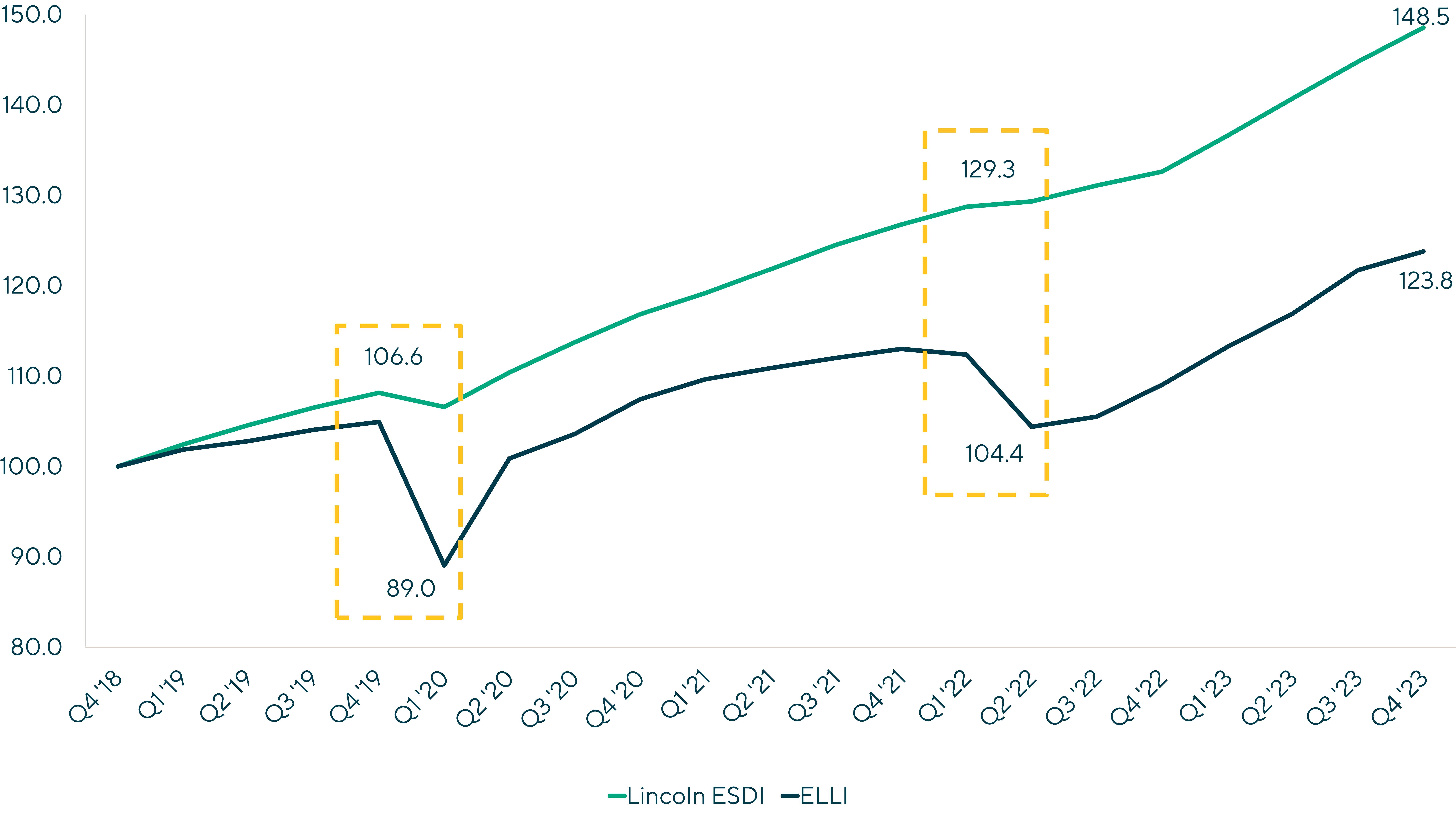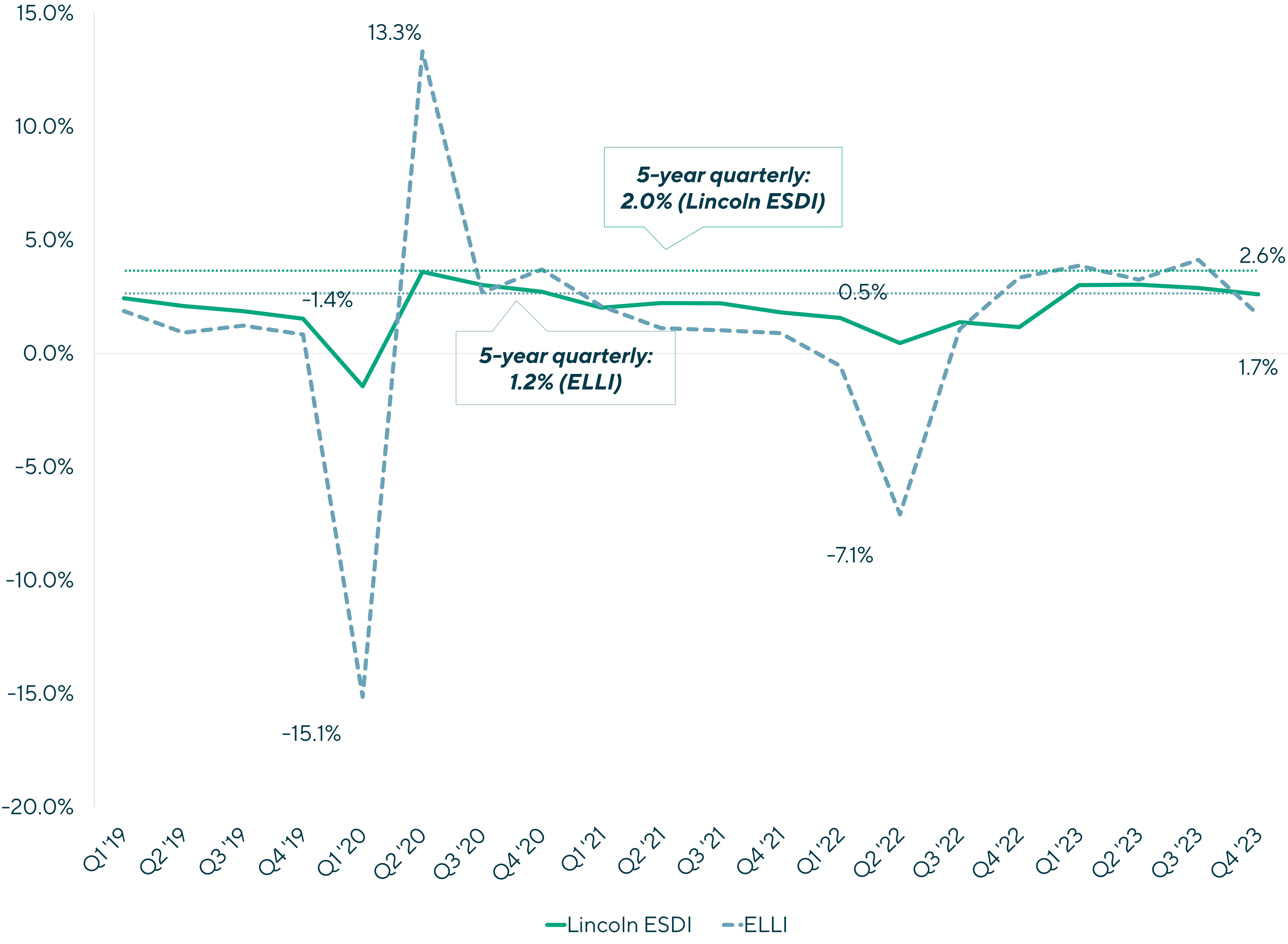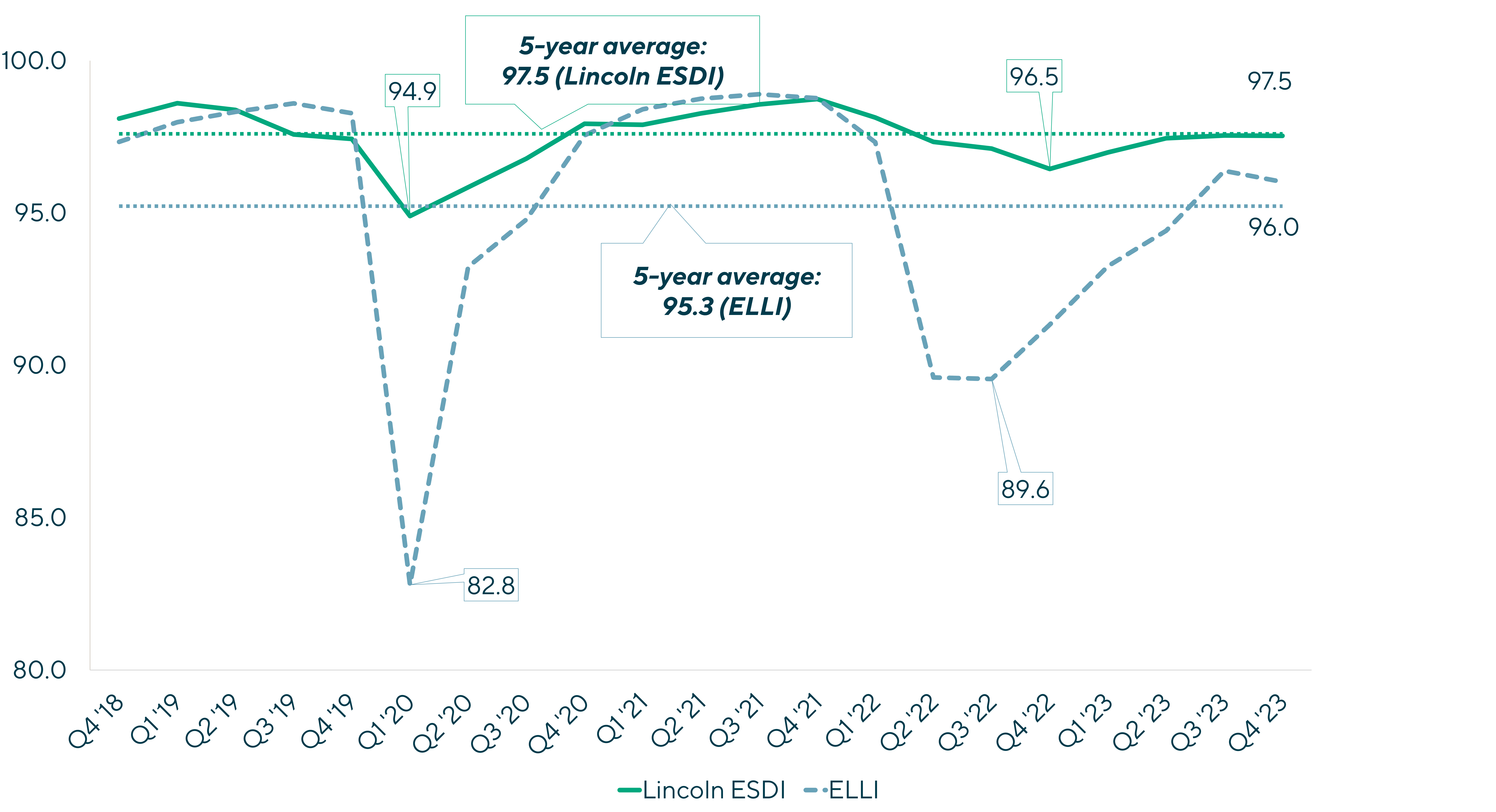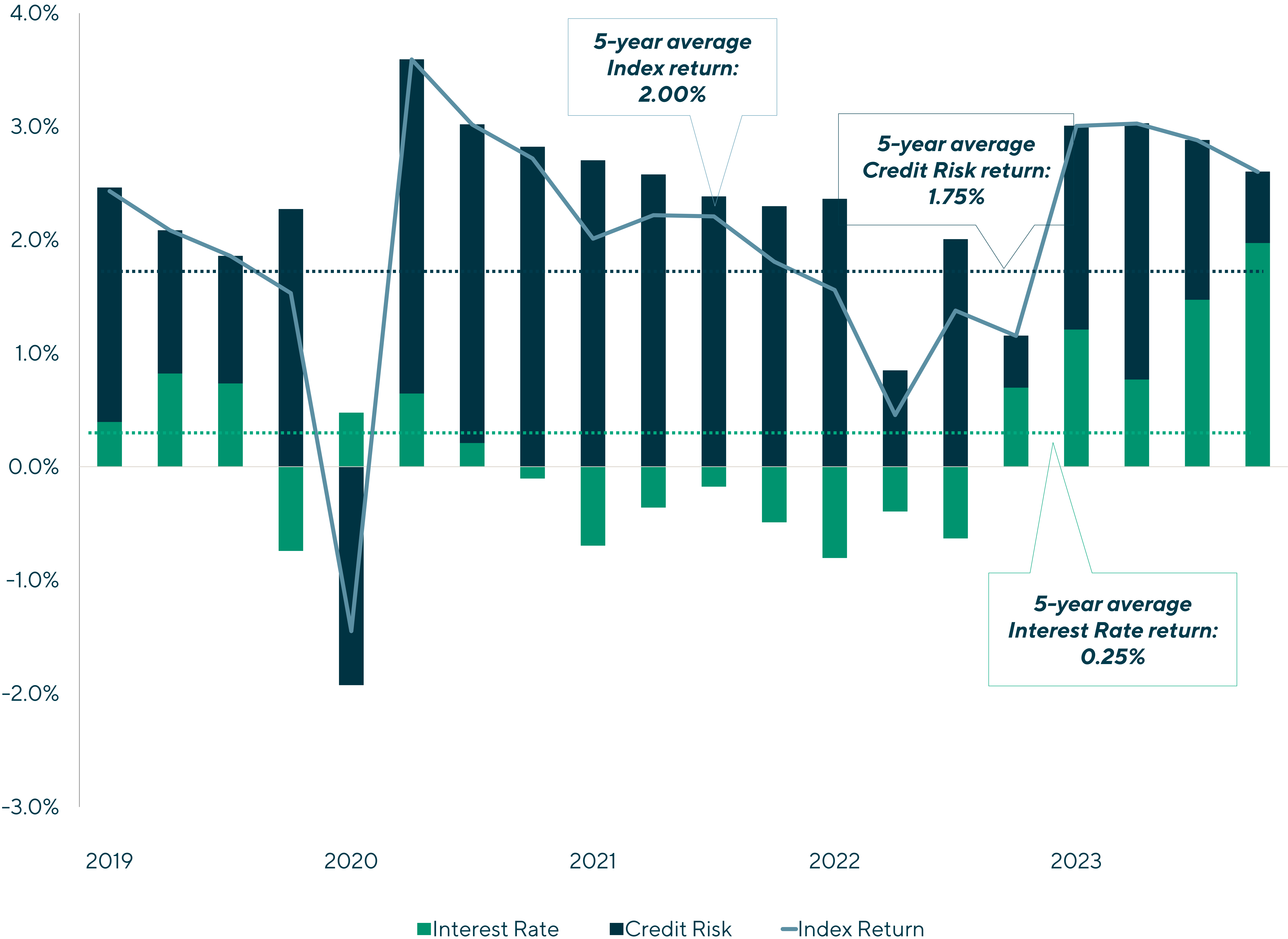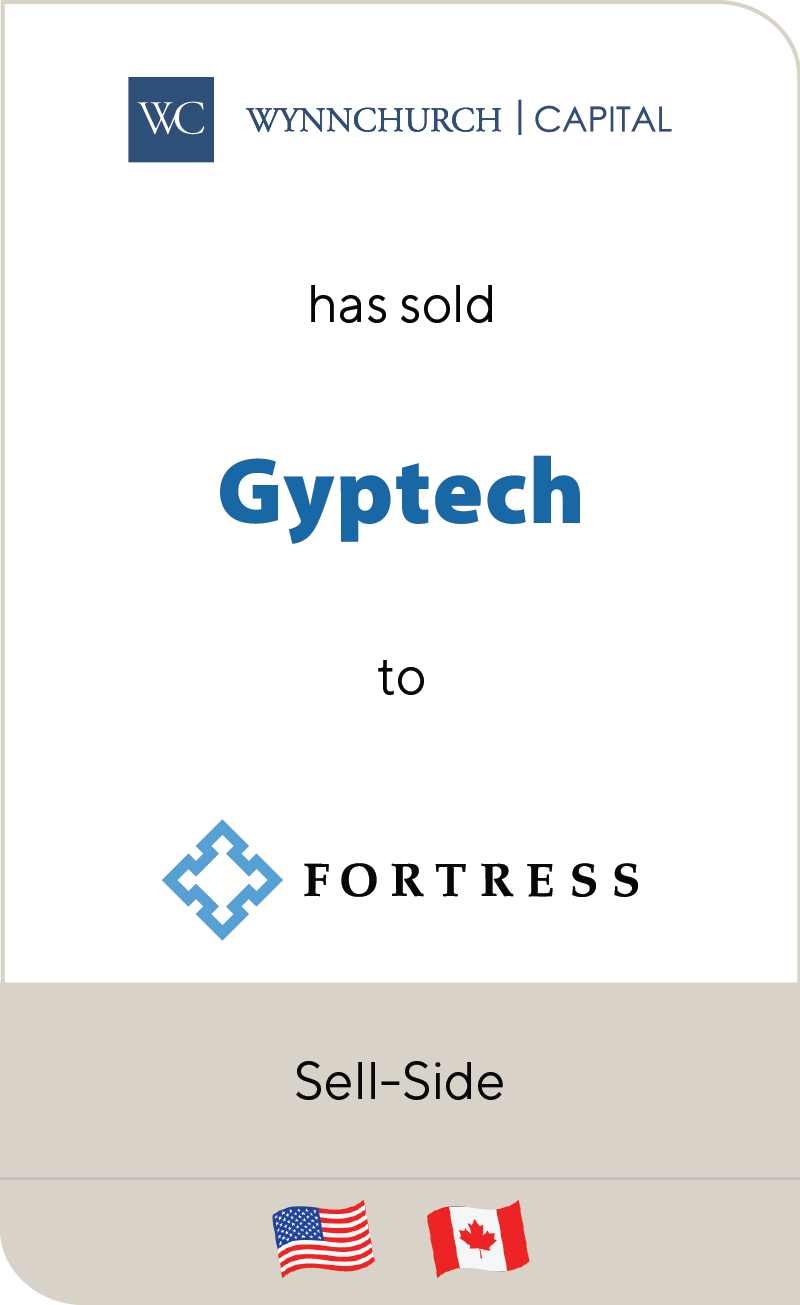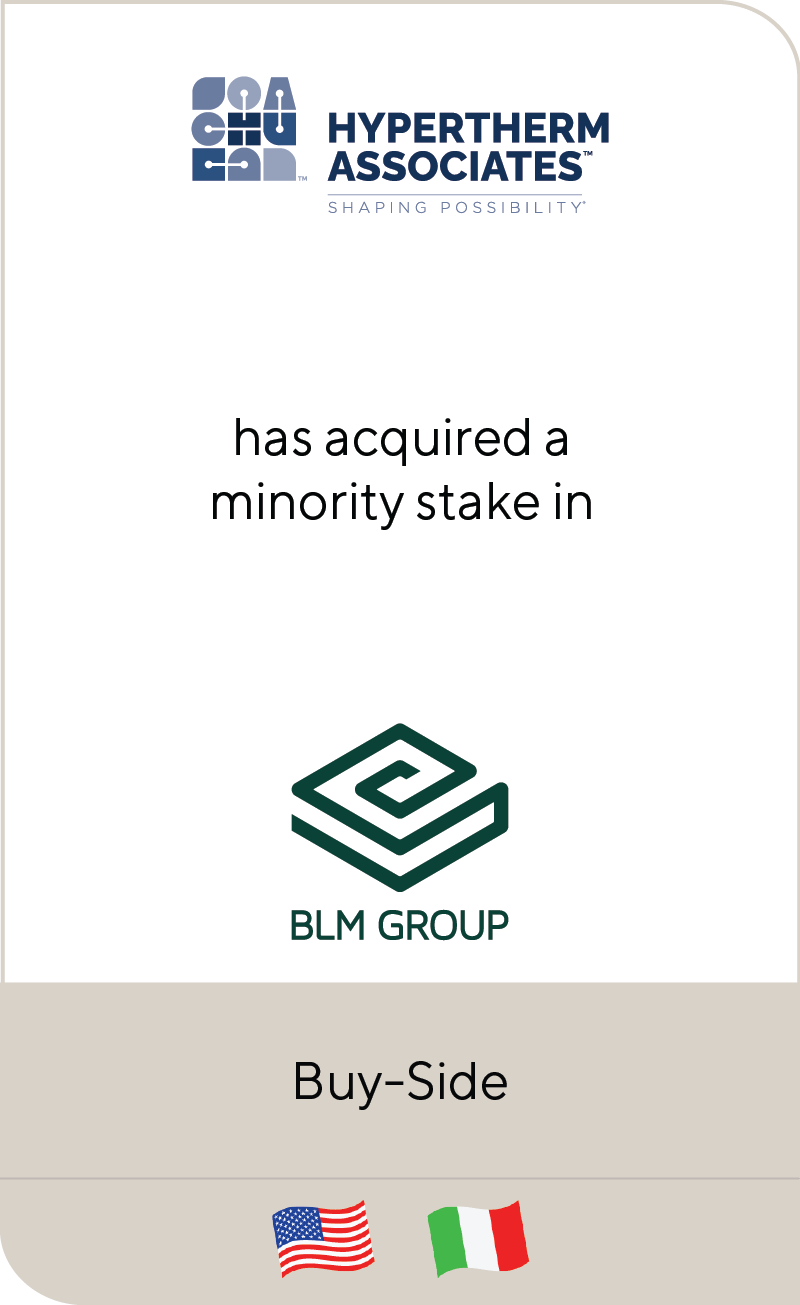Q4 2023 Lincoln European Senior Debt Index
Lincoln International LLC (“Lincoln”) is pleased to release its first quarterly European Senior Debt Index (the “Lincoln ESDI”), providing performing European private credit metrics spanning the period from Q4 2018 to today. The Lincoln ESDI represents years of research and analysis of Lincoln’s proprietary valuation data and was developed by professionals from Lincoln’s Valuations & Opinions Group in collaboration with Professor Pietro Veronesi of The University of Chicago Booth School of Business.
In contrast to loans made by commercial banks or in the broadly syndicated loan (“BSL”) market, the direct lending market is comprised of alternative lenders, having raised capital from public or private investors and will offer leveraged loans directly to borrowers, often to finance leveraged buyouts or recapitalizations. Direct lending deals typically are floating rate loans to private (i.e., non-rated) middle market companies commonly owned by private equity groups, and, unlike the BSL market, are not publicly tradeable. The performing European direct lending market has grown to between €350 to €400 billion of AUM as of 2023. For the last decade the European direct lending market has experienced double digit annual growth and is expected to continue at that rate for the next five years.
Throughout this recent period of the European direct lending market’s high growth, what has been difficult for market participants is the ability to granularly observe the performance of this important but opaque asset class. For example, private credit valuations and returns during macroeconomic events such as the recent COVID pandemic beginning in 2020 and increased inflation and interest rates beginning in 2022 demonstrated that the direct lending market behaves differently than loans in the BSL market. While correlated to the BSL market, the direct lending market experienced lower price and spread changes as it has proven to be significantly less volatile than the BSL during these periods. The direct lending market is a significant source of capital to private equity-backed middle market companies. The Lincoln ESDI will benefit market participants by providing quarterly performance information facilitating a greater understanding of the attributes of this important source of capital to the private sector.
The Lincoln ESDI provides insights into the European direct lending market as it is a fair value index consisting of four components:
|
Additional descriptive statistics include:
Isolation of index return components attributable either to
|
-
Quarterly Overview
- IMPORTANT DISCLOSURE
- View a comparison of Lincoln’s European and U.S. Senior Debt Indices.
- The Lincoln ESDI provides insight into the direct lending market as it is a fair value index consisting of four components: 1. Total return (income return plus capital gain return); 2. Price (i.e., fair value); 3. Spread; and, 4. Yield to maturity.
- Additional descriptive statistics include: Isolation of index return components attributable either to 1. changes in reference rates, or 2. changes in fundamental performance relating to credit risk; EBITDA size; and, 3. The change in fair value resulting from changes in spreads.
- Click here to download a printable version of this report.
How We Obtain the Information
On a quarterly basis, globally Lincoln values over 5,000 private companies primarily owned by over 150 alternative investment funds. These companies are levered via borrowings from the direct lending market. We then bifurcate loans by geography creating a U.S. Senior Debt Index and a European Senior Debt Index. As the subject companies are private, both the U.S. and European Senior Debt Index constituents are based upon Lincoln’s valuations of these loans for our alternative investment fund clients and therefore not disclosed publicly. For many of the private companies valued quarterly, Lincoln advises on the fair value of at least one senior debt security in the capital structure. All valuations conform with U.S. GAAP and IFRS and fair value principles and have been reviewed by fund management, fund boards, limited partners, and auditors. The U.S. and European Senior Debt Indices are size-weighted. However, the maximum contribution to the index of any single loan valuation in any period is 2.0% (i.e., no one loan can constitute more than 2.0% of the overall index value).
Returns
The starting date of the Lincoln ESDI is December 31, 2018 commencing with an index value of 100.0.
Comparison of Total Return – Lincoln ESDI to Morningstar European Leveraged Loan Index
Observations:
- Direct lending investment returns are generated in two ways: (1) via capital gains and losses (e.g., through OIDs); and, (2) via income returns (e.g., through interest coupons). In this asset class, income returns generally dominate capital gains or losses resulting in (typically, historically) positive quarterly total returns.
- Since inception of the Lincoln ESDI, both the BSL as measured by the Morningstar European Leveraged Loan Index (“ELLI”) and direct lending markets as measured by the Lincoln ESDI have experienced an increase in total returns. However, the direct lending market experienced modest COVID-related losses during Q1 2020 while the BSL market experienced dramatic COVID-related losses and incurred losses for two further quarters. This divergence of returns performance was repeated throughout 2022 following high inflation and interest rate hikes. As a result, for the period December 31, 2018 through December 31, 2023, the Lincoln ESDI significantly outperformed the European BSL market.
- A valuation idiosyncrasy for private credit investments is that capital appreciation of direct lending loans will always be capped by the expected repayment amount, but the maximum downside potential is minus-100%. To illustrate this, most direct lending and BSL loans will have a fair value of 100 (i.e., par). Taking OIDs into account, it is highly likely that the fair value of any given portfolio of private credits will have a fair value of less than 100 (assuming those loans are some years away from full repayment). Furthermore, the fair value of private credit is generally capped near 100 (i.e., 100% of the loan principal to be repaid, as loans will most likely be prepayable at par unless there is contractual call protection remaining, which would increase the maximum repayment amount above par), and unlike bonds that trade in the public markets with substantial makewhole penalties or non-call periods.
- The pandemic demonstrated that the direct lending market behaves differently than the BSL market. While correlated to the BSL market (approximately 85% in fair value terms), the direct lending market experienced significantly less volatility than the BSL market during the early pandemic as well as during recent the high inflation and interest rate environment.
Correlation and Comparison of Quarterly Returns – Lincoln ESDI to ELLI
| Index | Compound Annual Growth Rate | Standard Deviation |
| Lincoln ESDI | 8.2% | 1.1% |
| ELLI | 4.4% | 5.0% |
Observations:
While the correlation between the Lincoln ESDI and ELLI is high:
- the Lincoln ESDI is significantly less volatile; while,
- generating higher returns.
Investments in the direct lending market experienced higher returns and lower volatility than the BSL market.
- Given that the companies being financed in the direct lending market are smaller than companies in the BSL market, it would be expected that direct lending returns would be higher.
- However, lower volatility is also explained by: (a) the impact of interest rate floors, particularly in low interest rate environments, which can serve to stabilize cash flows and effectively convert direct lending loans to fixed rate instruments during those periods, whereas BSL cash flows do often do not benefit from LIBOR floors; (b) the influence of periodic public trading illiquidity on valuations, as loans in the direct lending market rarely trade while BSL market securities trade constantly; and (c) the effect of directional capital outflows as investors in the BSL market have a greater ability to liquidate their investments (but at significant discounts during periods of market dislocation) when they decide to exit their BSL investments, whereas investments in direct lending funds do not typically permit investor redemptions.
- As examples, during the onset of COVID in Q1 2020 and the period of higher inflation and increasing interest rates throughout 2022, more BSL investors withdrew capital from public loan markets than entered them, generating negative returns for those investors. This selling pressure heightened the decline in BSL prices relative to the direct lending market.
Yields
Comparison of Yields – Lincoln ESDI to ELLI
Observations:
- The average yield to maturity of the Lincoln ESDI and ELLI from 2018 Q4 to 2023 Q4 was 9.2% versus 5.9%, respectively.
- The difference in average yield over this period was 3.3%. However, commencing in 2022 Q2 the difference in yield between the direct lending market and BSL market has declined dramatically to approximately 2.1% in the most recent period (Q4 2023).
- It would be expected that the cost of debt for companies borrowing in the direct lending market exceeds the BSL market as the cost of debt is higher for smaller middle market companies compared to larger companies borrowing in the BSL market. Furthermore, a portion of the higher yield occurring within the direct lending market is attributable to illiquidity.
Fair Value – Lincoln ESDI to ELLI
Observations:
- The pandemic demonstrated that the direct lending market behaves differently than loans in the BSL market. While correlated to the BSL market (the correlation of fair value is approximately 85%), the direct lending market experienced significantly less volatility than the BSL market during the onset of the pandemic (Q1 2020) as well as during the subsequent period of higher inflation and increasing interest rates (beginning in 2022).
Decomposing Yield – Reference Rate, Floors and Spreads
Decomposition of Index Returns: Interest Rate versus Credit Risk:
Observations:
- It was common that European direct lending loans contained floors during periods in which European reference rates were negative. During periods where reference rates were below 0% the value of a loan with a floor would increase (all else equal) given the subsidy provided by the floor.
- In negative interest rate environments, the impact of the floor becomes a significant component of the total return and it creates an effective fixed rate instrument despite the loan bearing a floating rate.
- As reference rates increased beginning in 2022 Q1, the value of the floor decreased resulting in losses from interest rates (i.e., the value of the interest rate floor, as a derivative, declined as interest rates increased above the floor). As interest rates began to rise, the returns from interest rates became the primary component of total return.
Methodology
Source of Data and How We Obtain the Information
On a quarterly basis, Lincoln values over 5,000 private companies owned by over 150 alternative investment funds. Most of these companies are levered via borrowings from the direct lending market. A significant percentage of the Lincoln ESDI constituents are based upon valuations of loans provided by private investment vehicles and, therefore, not disclosed in public filings.
For the private companies in the Lincoln ESDI, Lincoln advises on the fair value of at least one senior debt security in the capital structure on at least a recurring quarterly basis. All valuations conform with accounting fair value principles and have been reviewed by fund management, fund boards, limited partners, and / or auditors.
Additional information about the methodology discussion can be found at: www.lincolninternational.com/perspectives/an-overview-of-the-lincoln-senior-debt-index.
Academic Advisor
Professor Pietro Veronesi is the Chicago Board of Trade Professor of Finance at the University of Chicago, Booth School of Business. He is also a research associate of the National Bureau of Economic Research and a research fellow of the Center for Economic and Policy Research.
Professor Veronesi’s research has appeared in numerous publications, including the Journal of Political Economy, American Economic Review, Quarterly Journal of Economics, Journal of Finance, Journal of Financial Economics and Review of Financial Studies. He is the recipient of several awards, including the 2015 AQR Insight award, the 2012 and 2003 Smith Breeden prizes from the Journal of Finance, the 2008 WFA award, the 2006 Barclays Global Investors Prize from the EFA, the 2006 Fama / DFA prizes from the Journal of Financial Economics and the 1999 Barclays Global Investors / Michael Brennan First Prize from the Review of Financial Studies. Professor Veronesi teaches both masters- and Ph.D.-level courses. He is the recipient of the 2009 McKinsey Award for Excellence in Teaching.
His undergraduate work was in economics at Bocconi University where he received a laurea magna cum laude with honors in 1992. He earned a master’s degree with distinction in 1993 from the London School of Economics. He joined the Chicago Booth faculty upon obtaining his Ph.D. in Economics from Harvard University in 1997.
IMPORTANT DISCLOSURE: The Lincoln European Senior Debt Index is an informational indicator only, and does not constitute investment advice, an investment recommendation or other information recommending or suggesting an investment strategy (within the meaning of the EU and UK Market Abuse Regulations), or an offer to sell or a solicitation to buy any security. It is not possible to directly invest in the Lincoln European Senior Debt Index. Some of the statements above contain opinions based upon certain assumptions regarding the data used to create the Lincoln European Senior Debt Index, and these opinions and assumptions may prove incorrect. Actual results could vary materially from those implied or expressed in such statements for any reason. The Lincoln European Senior Debt Index has been created on the basis of information provided by third-party sources that are believed to be reliable, but Lincoln International has not conducted an independent verification of such information. Lincoln International makes no warranty or representation as to the accuracy or completeness of such third-party information.
The Lincoln ESDI should not be construed as an offer to sell or buy, or a solicitation to sell or buy, any products which refer to the Lincoln ESDI. The use of the Lincoln ESDI in any manner is not endorsed or recommended by Lincoln International and Lincoln International is not responsible for any use made of the Lincoln ESDI, and is by permission only via a Data Usage Agreement with Lincoln International. The Lincoln ESDI must not be used to: (i) determine the amount payable under a financial instrument or a financial contract or the value of a financial instrument; or (ii) measure the performance of an investment fund with the purpose of tracking the return of the Lincoln ESDI or of defining the asset allocation of a portfolio or of computing the performance fees (within the meaning of the EU and UK Benchmarks Regulations). Lincoln International does not guarantee the accuracy and/or completeness of the Lincoln ESDI and Lincoln International shall not have any liability for any errors or omissions therein. None of Lincoln International, any of its affiliates or subsidiaries, nor any of its directors, officers, employees, representatives, delegates or agents shall have any responsibility to any person (whether as a result of negligence or otherwise) for any determination made or anything done (or omitted to be determined or done) in respect of the Lincoln ESDI and any use to which any person may put the Lincoln ESDI. Lincoln International has no obligation to update the Lincoln ESDI and has no obligation to investors with respect to any product which refers to the Lincoln ESDI. Any investment in such a product will not acquire an interest in the Lincoln ESDI. Lincoln International is not an investment adviser and will not provide any financial advice relating to a product which refers to the Lincoln ESDI. Investors should read any such product offering documentation and consult with their own legal, financial and tax advisors before investing in any such product.
© 2023, 2024 Lincoln Partners Advisors LLC. All rights reserved. LINCOLN SENIOR DEBT INDEX, LINCOLN EUROPEAN SENIOR DEBT INDEX, and LINCOLN INTERNATIONAL are service marks owned by Lincoln Partners Advisors LLC and its affiliated entities. Any use of these service marks and these materials, including the reproduction, modification, distribution or republication of these materials, without the prior written consent of Lincoln International, is strictly prohibited.
Contributors

I find immense fulfillment in enabling clients to achieve their objectives and navigate the complexities of today's ever-changing landscape.
Chris Croft
Managing Director & Co-head of Transaction Opinions
New York
I enjoy sharing insights about market and valuation trends with my clients, while also leading a differentiated and high-touch process.
Brian Garfield
Managing Director & Head of U.S. Portfolio Valuations
New York
I enhance my clients’ decision making and governance processes by providing independent and objective financial advice in a highly responsive manner.
Chris Gregory
Managing Director & Co-head of Transaction Opinions
New York
I enjoy the opportunity to provide clients with insightful and unbiased advice that will help them make the most informed decisions possible.
Ron Kahn
Managing Director & Co-head of Valuations & Opinions
Chicago